
Salty Sam’s Fun Blog for Children
Number 276
Luddites
Hello Everyone

Do you ever have to ask your grandparents or great-grandparents to explain something to you like a word or who a person from history was?
Do they ever ask you who a pop star is or how to do something on their device?
The world is changing so quickly that it is difficult to keep up with everything. Some people can cope with rapid change and some people really hate it.
Some people fear change – because it is natural for humans to feel uncomfortable with it. Some people fear the unknown or what they don’t understand scares them. Sometimes people fear that new things in the world will take something away from them that they don’t want to lose – like their job.
And people have always been like this.
Have you ever heard anyone ever call anyone else a Luddite and you didn’t know what it meant?
When you know the story of the Luddites you realize that people in history didn’t like changes any more than some people do today.
Luddites were a group of people in the early 19th century who didn’t like the way that modern machines were taking the livelihoods away from traditional crafts men.
Spinning is the art of twisting fibres together to make long thread. Cotton and wool are spun to make threads called yarns. The yarn is made into cloth on a weaving machine and this is called a loom.
One set of yarns is threaded in and out of the other making a crisscross pattern.
This spinning and weaving was all done by hand for many hundreds of years before the invention of machines to do the work in the lndustrial Revolution which started in the 1700s.
ln 1764, James Hargreaves invented a machine that could spin 100 threads of cotton at one time. lt was called the spinning jenny.
Nowadays, we use the word Luddite to describe someone who is opposed to technological change.
The protesters were named after General Ned Ludd or King Ludd. He was a mythical figure who lived in Sherwood Forest and it was said that he led the movement. Probably the name came originally from a young apprentice who smashed two stocking frames in 1779.
The movement began in Nottingham, a town famous for making lace, in 1811, as a group of people protested against wage reductions, and it quickly spread through the north and midlands.
The Luddites had spent years learning their trade, and the new machines could quickly produce textiles for a lower price than the Luddites ever could. The people who worked in the factories with these machines were paid lower wages because they were less-skilled. Even small children were used as cheap workers.
The Luddites wanted to get rid of new machinery like the weaving looms that had been set up in factories because they were taking employment away from hand weavers. They organized themselves into disciplined fighting units and set careful plans for attack.
At first, they sent threatening letters but then they broke into factories in order to smash up the new machinery and destroy mills, but they also attacked the factory owners too. ln response to this threat, some factory owners built secret rooms in their factories that they could hide in, in case of attack.
Fights broke out between the Luddites and the thousands of government soldiers who were sent to impose order.
The owners had to put guards in factories. They were determined to make their new businesses successful. ln 1812, the authorities imposed the death penalty for anyone destroying machinery. The following year 17 men were executed.
The disturbances continued.
The Napoleonic War in Europe had disrupted international trade and food shortages followed. The price of food was going up and people were desperate to look after their families, but the lndustrial Revolution continued to take hold and it affected more and more lives.
ln 1816, the Luddite Movement came to an end when factory owners started shooting the protesters – and the soldiers were also there to back them up.
But in 1830, similar riots broke out in protest against the use of farm machinery in the south of England. Again the machines, like threshing machines, could work more rapidly and cheaply than people.
And nowadays, there are many people who don’t like the way that machines, computers and robots are taking away the jobs of people. You only have to look in the supermarkets and post offices that you visit to see this.
Last century, it was usual for people to have only one career for the whole of their lives and it was not unusual for someone to stay with the same employer like a bank, factory, mine or government department for forty or more years.
But in this century, it is far more likely that people will seek out new careers as their circumstances change. Some people even have what is called a portfolio career. That means they do more than one job because they can’t make enough money from just one job, or perhaps it just makes their life more interesting.
Charles Darwin said that it is not the strongest or fittest animals that survive long-term, but the ones that are the most adaptable.
Bye bye everyone – don’t forget to subscribe to my blog!
lf you like my blog, please support it by telling all your friends and followers about it.
Thank you!
And see you again next Fun Friday!
Love and kisses
Salty Sam

www.christina-sinclair.com


Bill and Bob’s Joke of the Week![]()
![]()
Bob: l was just reading an interesting item of news in the Rocky Bay Gazette.
Bill: Oh, really?
Bob: Yes, a local factory owner, Jeremiah Shoreditch, fell into a fabric loom last week, but he is now almost recovered.
Bill: Tee hee hee.
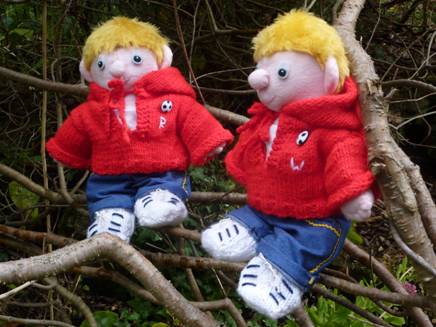
Salty Sam © Christina Sinclair 2015
Unauthorized use and/or duplication of material from this blog without express and written permission from this blog’s author and owner is strictly prohibited.
Links may be used to www.christina-sinclair.com

Picture Gallery
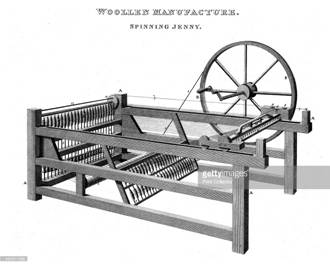 Spinning Jenny
Spinning Jenny
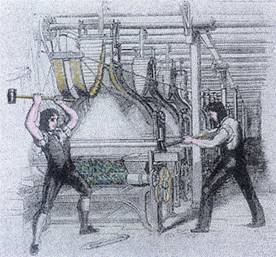 Luddites
Luddites


 THE SALTY SAM NEWS DESK
THE SALTY SAM NEWS DESK

This week we have another of Bill and Bob’s quizzes for you. They drew inspiration from an exercise that Miss Pringle gave them at school weeks ago.
They enjoyed it so much they turned it into a game when they came to live in my lighthouse.
They have been helping me out with my blog since they have been living with me in splendid isolation out here in the middle of the sea.
They were testing each other with pictures they had drawn themselves this week.
You just have to look at the pictures and decide which compound nouns they represent.
A compound noun is two or more words put together to make a new word.
1.


2.


3.

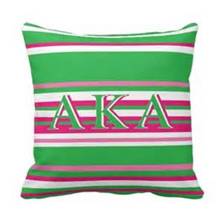
4.


5.

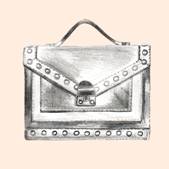
6.


7.


And it was decided this week that it was time for the children to go home.
I was very sorry to see them go, but they left some toys here and I am sure they will be back soon.

*********************
TO ADVERTISE ON THIS BLOG
PLEASE CONTACT:
christina.sinclair.ads@aol.co.uk
*********************


Quick Quiz
Do you know what these idioms mean?
They are all to do with change.
- A leopard can’t change its spots
- To take shape
- A breath of fresh air
- To turn over a new leaf
- You can’t each an old dog, new tricks
- To make a clean break
- To go from strength to strength




lt’s the Weekend!

HOW TO MAKE A PAlR OF DRESSED TEDDlES
Some people prefer to have boy teddies and some people prefer girl teddies.
You could make two of these teddies and have one of each.
You could just have a knitted teddy or just put a skirt or pair of trousers on them – or if you think that they will get cold like that you can make them a jumper each as well.

TEDDY BODY (KNIT ONE)
Using 4mm knitting needles and brown dk yarn cast on 30 stitches
Knit 32 rows of stocking stitch
Don’t cast off – instead run a length of yarn through the stitches so that you can take them off your needle
TEDDY LEGS (KNIT TWO)
Using 4mm knitting needles and brown dk yarn cast on 15 stitches
Knit 20 rows of stocking stitch
Don’t cast off – instead run a length of yarn through the stitches so that you can take them off your needle
TEDDY ARMS (KNIT TWO)
Using 4mm knitting needles and brown dk yarn cast on 12 stitches
Knit 14 rows of stocking stitch
Don’t cast off – instead run a length of yarn through the stitches so that you can take them off your needle
TEDDY EARS (KNIT TWO)
(Made in garter stitch)
Using 4mm knitting needles and brown dk yarn cast on 8 stitches
Knit 4 rows
Knit 2 together, knit 4, knit 2 together
Knit 2 together, knit 2, knit 2 together
Knit 2 together, knit 2 together
Knit 2 together
Cast off
TO MAKE UP
- Sew up the centre back seam of the body right sides together and then turn right sides out
- Sew up the bottom seam wrong sides together (or sew up this seam at the same time as you sew the legs on)
- Pull in the ends of the feet and sew up the leg inside seams with right sides together then turn the right way out
- Stuff the legs and sew the tops onto the bottom of the body by laying the legs onto the stomach and sewing from behind (place the leg seams facing each other)
- Pull in the ends of the hands and sew up the under arm seams with right sides together
- Turn the arms the right way out
- Stuff the arms and sew the tops onto the sides of the body by laying the arms onto the chest and sewing from behind
- Stuff the body and pull in the top of the head to close it up then take the yarn down the back seam and secure into the back seam at shoulder level
- Bind the yarn tightly around the body a couple of times above the arms to make a neck
- Sew the ears into place
- Sew eyes onto the front of the face using a coloured dk yarn – make the eyes with French knots (wind the yarn around the needle three times) and sew on a mouth
- If you are making your teddy into a decoration for a bag or key ring, sew the chain to the top of the head
TIP
Do not over-stuff the teddies because it will show through the knitting and their clothes will not fit them.

TROUSERS (KNIT TWO)
Using 3¾mm knitting needles and green dk yarn cast on 18 stitches
Knit 4 rows of 1 and 1 rib – that is slip 1, and then purl 1, knit 1, purl 1 to end of the row
Change to 4mm knitting needles
Knit 4 rows of stocking stitch
Continue to knit in stocking stitch and cast on 1 stitch at the beginning of the next 4 rows (22sts)
Knit 10 rows of stocking stitch
Purl 1 row
Purl 1 row
Cast off
TO MAKE UP
With right sides together and using over-sew stitching sew up the front and back of the body of the trousers
Then sew up the inside legs from one ankle to the other
Turn the trousers the right way out
SKIRT (KNIT TWO)
Using 3¾mm knitting needles and red dk yarn cast on 18 stitches
Knit 4 rows of 1 and 1 rib – that is slip 1, and then purl 1, knit 1, purl 1 to end of the row
Change to 4mm knitting needles
Continue knitting the rest of the skirt in garter stitch
Increase 1 stitch at the beginning of the next 4 rows (22sts)
Knit another 10 rows of garter stitch
Change to green yarn
Knit 4 rows of garter stitch
Cast off
TO MAKE UP
With right sides together and using over-sew stitching sew up the side seams
Crochet 100 chains into a length of green yarn (you could crochet 80 chains if you have nimble fingers and are very good at tying bows and would like to have a bow that is smaller than the bow in the photograph)
Thread this chain into the skirt waistband so that the ends come to the front and then neaten the two ends of the chain by threading the left over yarn into the chain itself

BOY’S JUMPER BACK (KNIT ONE)
Using 4mm knitting needles and red dk yarn cast on 18 stitches
Knit 1 row
Knit 1 row
Knit 14 rows of stocking stitch
Purl 1 row
Purl 1 row
Cast off
BOY’S JUMPER FRONTS (KNIT TWO)
Using 4mm knitting needles and red dk yarn cast on 10 stitches
Knit 1 row
Knit 1 row
Knit 8 rows of stocking stitch
Change to green yarn
Knit 12 rows of garter stitch
Cast off
BOY’S JUMPER SLEEVES (KNIT TWO)
Using 4mm knitting needles and red dk yarn cast on 20 stitches
Knit 1 row
Knit 1 row
Knit 8 rows of stocking stitch
Cast off
TO MAKE UP
With right sides together and using over-sew stitching sew the two fronts together
Then sew up the shoulder seams (2cm from the arm end)
Sew the tops of the sleeves to the shoulders (fold the sleeve in half to find the centre of the sleeve to match up with shoulder seam)
Sew up the side and under arm seams
GIRL’S JUMPER BACK AND FRONT (KNIT TWO)
Using 4mm knitting needles and green dk yarn cast on 16 stitches
Knit 1 row
Knit 1 row
Knit 12 rows of stocking stitch
Purl 1 row
Purl 1 row
Cast off
GIRL’S JUMPER SLEEVES (KNIT TWO)
Using 4mm knitting needles and green dk yarn cast on 20 stitches
Knit 1 row
Knit 1 row
Knit 8 rows of stocking stitch
Cast off

TO MAKE UP
With right sides together and using over-sew stitching sew up the shoulder seams (½cm from the arm end)
Sew the tops of the sleeves to the shoulders (fold the sleeve in half to find the centre of the sleeve to match up with shoulder seam)
Sew up the side and under arm seams

SCARF (KNIT ONE FOR EACH TEDDY)
Using 4mm knitting needles and white dk yarn cast on 50 stitches
Knit 8 rows of garter stitch
Cast off

Please note that the material on this blog is for personal use and for use in classrooms only.
It is a copyright infringement and, therefore, illegal under international law to sell items made with these patterns.
Use of the toys and projects is at your own risk.
©Christina Sinclair Designs 2015

Answers to the News Desk Quiz
- letterbox
- rainbow
- pincushion
- scarecrow
- bookcase
- vegetable patch
- lighthouse



Quick Quiz Answers
- A leopard can’t change its spots – people can’t fundamentally change their character
- To take shape – a project becoming reality
- A breath of fresh air – something new that is very welcome
- To turn over a new leaf – to change one’s habits in order to become a better person
- You can’t each an old dog, new tricks – a person set in their ways (lived in a certain way for a long time) is unlikely to be able to learn about new things very well
- To make a clean break – to leave an old way of living completely behind – it could relate to a relationship with a person or to live or work in a different place
- To go from strength to strength – to become more and more successful

Leopard

For an Embroidery Stitches Chart
Check out Blog Post 3

